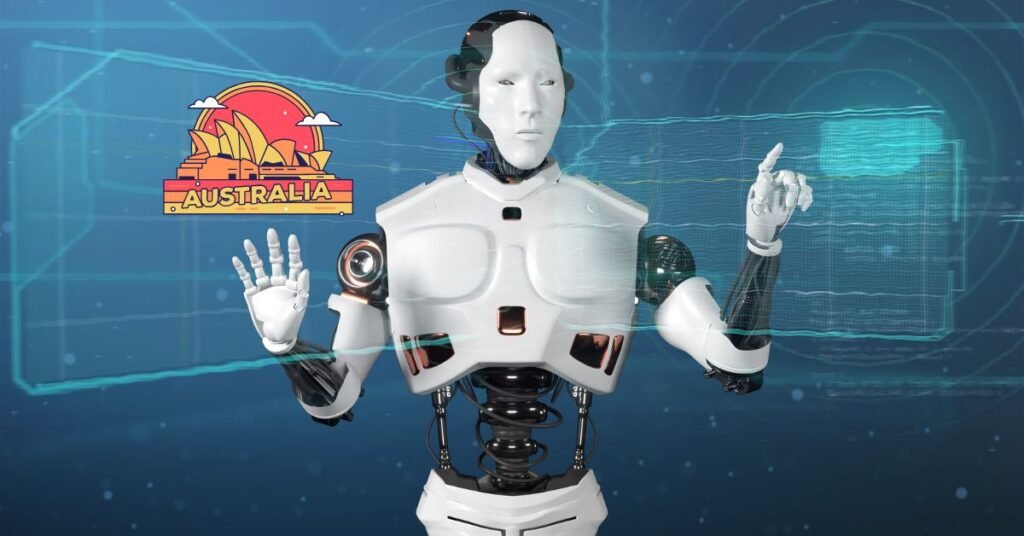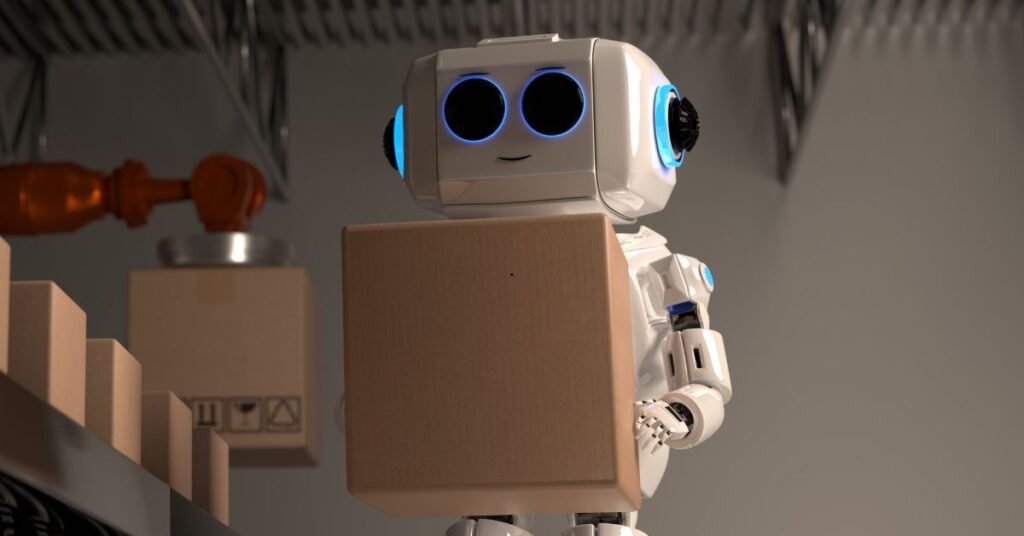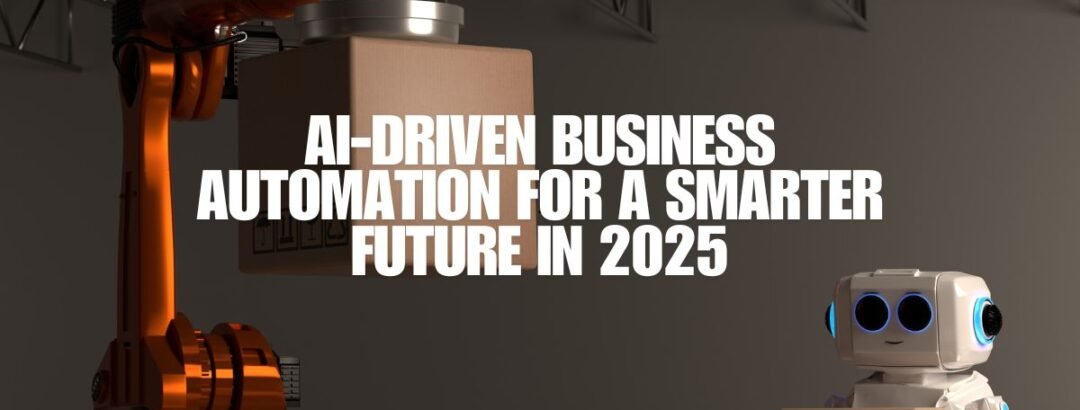The advent of artificial intelligence (AI) and automation is heralding a new era in the Australian workforce, fundamentally altering how businesses operate. As industries increasingly adopt AI-powered technologies or AI-driven business automation, the landscape of work is shifting dramatically. This transformation is not merely a trend; it represents a significant evolution in productivity, efficiency, and the nature of jobs themselves.
Australian businesses are at the forefront of this change, leveraging AI to streamline operations, enhance customer experiences, and drive innovation. In this context, the future of work in Australia is poised to be characterised by a symbiotic relationship between humans and machines. While some fear that automation will lead to widespread job losses, it is essential to recognise that AI can also create new roles and opportunities which leads to AI-driven business automation.
The integration of AI into various sectors promises to augment human capabilities rather than replace them entirely. As businesses adapt to these changes, they will need to rethink their workforce strategies and invest in training and development to ensure that employees are equipped with the skills necessary to thrive in an AI-driven environment.
Key Takeaways
- AI-driven business automation is set to revolutionize the future of work for Australian businesses, leading to increased efficiency and productivity.
- The impact of AI-driven business automation on Australian jobs will result in the transformation of certain roles, with a shift towards more high-skilled and technical positions.
- Australian businesses can prepare for AI-driven business automation by investing in upskilling and reskilling their workforce, embracing new technologies, and fostering a culture of innovation.
- AI-driven business automation will play a significant role in shaping the Australian workforce by creating new job opportunities, improving job quality, and driving economic growth.
- While AI-driven business automation presents opportunities for Australian businesses such as cost savings and improved decision-making, it also brings challenges such as job displacement and the need for ethical considerations.
The Impact of AI-Powered Automation on Australian Jobs

Risk of Job Displacement
On one hand, certain roles, particularly those involving repetitive tasks, are at risk of being automated. For instance, jobs in manufacturing and data entry are increasingly being performed by machines, leading to concerns about job displacement. According to a report by the Australian Government’s Department of Industry, Science, Energy and Resources, it’s estimated that up to 40% of jobs could be affected by automation in the coming decades. This statistic underscores the urgency for workers to adapt to a rapidly changing job market.
New Job Opportunities
Conversely, the rise of AI also creates new job opportunities that require advanced skills and expertise. Roles in data analysis, machine learning, and AI system management are becoming increasingly vital as businesses seek to harness the power of automation.
Industry-Specific Opportunities
Moreover, sectors such as healthcare and education are likely to see a surge in demand for professionals who can work alongside AI-driven business automation. For example, AI can assist doctors in diagnosing diseases more accurately, thereby enhancing patient care while allowing healthcare professionals to focus on more complex tasks that require human empathy and judgement.
How Australian Businesses Can Prepare for AI-driven business automation

To effectively prepare for the integration of AI-driven business automation, Australian businesses must adopt a proactive approach. This involves not only investing in technology but also fostering a culture of continuous learning and adaptability among employees. Companies should prioritise upskilling their workforce to ensure that employees are equipped with the necessary digital skills to work alongside AI systems.
Training programs focused on data literacy, coding, and critical thinking will be essential in preparing workers for the future job market. Additionally, businesses should consider implementing change management strategies that facilitate a smooth transition to automated processes. This includes engaging employees in discussions about the benefits of AI and addressing any concerns they may have regarding job security.
By fostering an inclusive environment where employees feel valued and informed, businesses can mitigate resistance to change and encourage a collaborative approach to embracing new technologies.
The Role of AI-driven business automation in Shaping the Australian Workforce
| 📈 Metrics | 📊 Findings |
|---|---|
| 🔬 Percentage of jobs at risk of automation | 30% |
| 🔧 Jobs likely to be impacted | Routine and repetitive tasks |
| 💡 Jobs with low automation risk | Highly skilled and creative roles |
| 🚀 Expected increase in productivity | Up to 40% |
| 🧠 Impact on workforce composition | Shift towards more technical and analytical roles |
AI-driven business automation is playing a pivotal role in shaping the Australian workforce by redefining job roles and expectations. As automation takes over routine tasks, employees are increasingly required to engage in higher-level thinking and problem-solving activities. This shift necessitates a workforce that is not only technically proficient but also adaptable and innovative.
The ability to collaborate with AI systems will become a crucial skill across various industries. Moreover, the integration of AI into the workplace is likely to lead to greater job satisfaction for many employees. By automating mundane tasks, workers can focus on more meaningful aspects of their jobs that require creativity and human insight.
For instance, marketing professionals can leverage AI tools to analyse consumer behaviour patterns, allowing them to develop more targeted campaigns without getting bogged down by data entry tasks. This evolution in job roles signifies a move towards a more engaged and fulfilled workforce.
Opportunities and Challenges of AI-driven business automation for Australian

The implementation of AI-driven business automation presents both opportunities and challenges for Australian businesses. On one hand, automation can significantly enhance operational efficiency, reduce costs, and improve service delivery. For example, retailers can utilise AI-driven inventory management systems to optimise stock levels and reduce waste, ultimately leading to increased profitability.
Furthermore, businesses that embrace automation are often better positioned to compete in a global market where agility and responsiveness are paramount. However, the transition to an automated workforce is not without its challenges. Businesses must navigate potential disruptions during the implementation phase, including resistance from employees who may fear job loss or changes in their roles.
Additionally, there are ethical considerations surrounding data privacy and security that must be addressed as companies collect and analyse vast amounts of information through AI systems. Striking a balance between leveraging technology for growth while ensuring employee welfare and ethical standards will be crucial for sustainable success for more you can also visit Google.
The Future of Work: How AI-driven business automation is Reshaping Australian Industries

Automation’s Reach Expands
In addition to agri, industries like finance, healthcare, and logistics are also getting a makeover from automation. In finance, for instance, AI algorithms are streamlining processes like fraud detection and risk assessment, allowing financial institutions to operate more efficiently while improving customer service. Similarly, in healthcare, AI is revolutionising diagnostics and treatment planning, enabling practitioners to deliver personalised care at scale.
Industry Evolution
As these industries continue to adapt to tech advancements, the future of work in Australia will be characterised by a dynamic interplay between human expertise and machine intelligence, ultimately driving economic growth and innovation across the nation.
A New Era of Productivity
With AI-driven business automation, Aussie industries are poised to experience a significant boost in productivity, leading to increased competitiveness and job creation. As we navigate this new era of automation, it’s essential to ensure that our workforce is equipped with the skills to work alongside machines, driving growth and prosperity for all Australians.
Conclusion
AI-driven business automation is transforming the Australian workforce, heralding a new era of productivity, efficiency, and innovation. While automation brings the risk of job displacement, it also opens up numerous opportunities for high-skilled roles and industry-specific advancements. Australian businesses must proactively adapt to these changes by investing in workforce training, fostering a culture of innovation, and addressing ethical considerations. By embracing this transformation, businesses can unlock significant growth potential, drive competitiveness, and ensure a future where human creativity and machine intelligence coexist harmoniously.
Need Assistance?
For tailored guidance on navigating the complexities of AI-driven business automation in the workplace, feel free to contact AI with Ashok. With their expertise in AI technologies and workforce strategy, they can help your business seamlessly adapt to these transformative changes.

